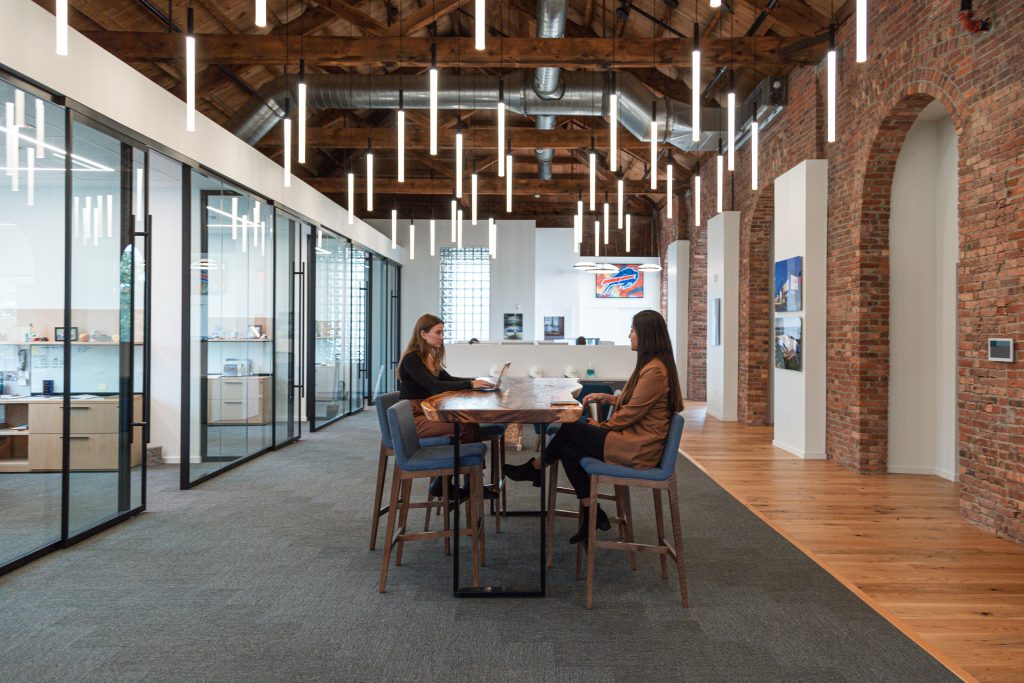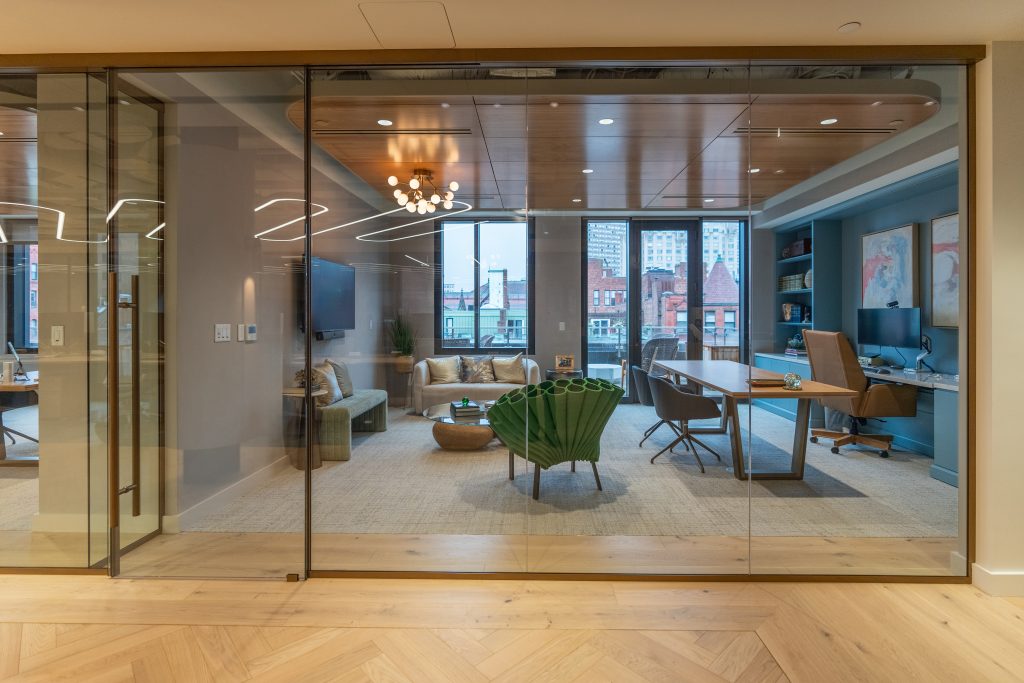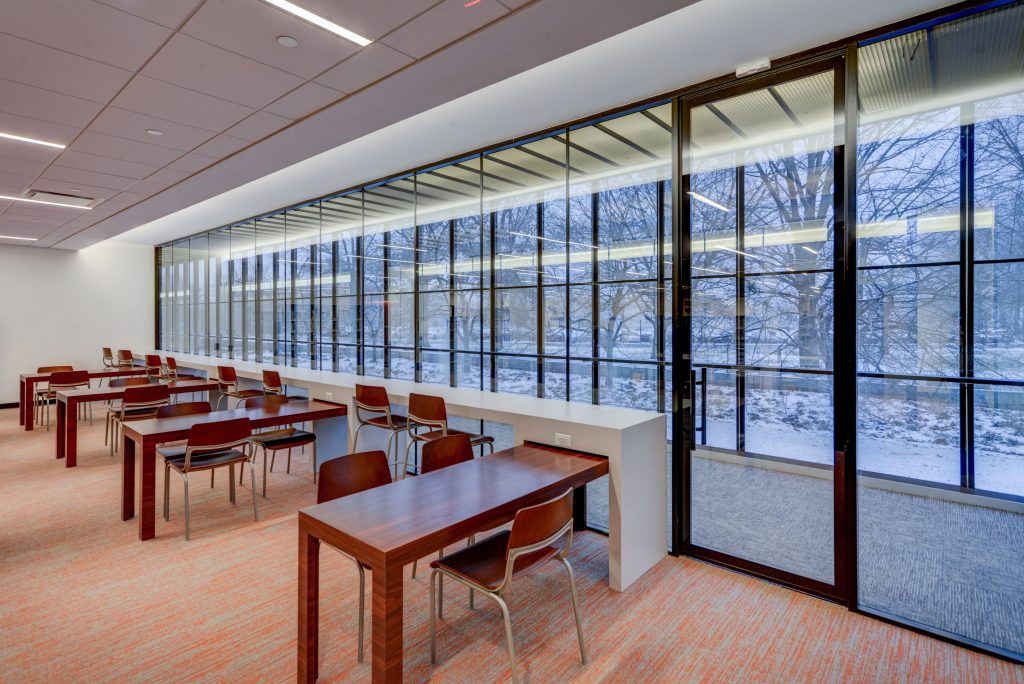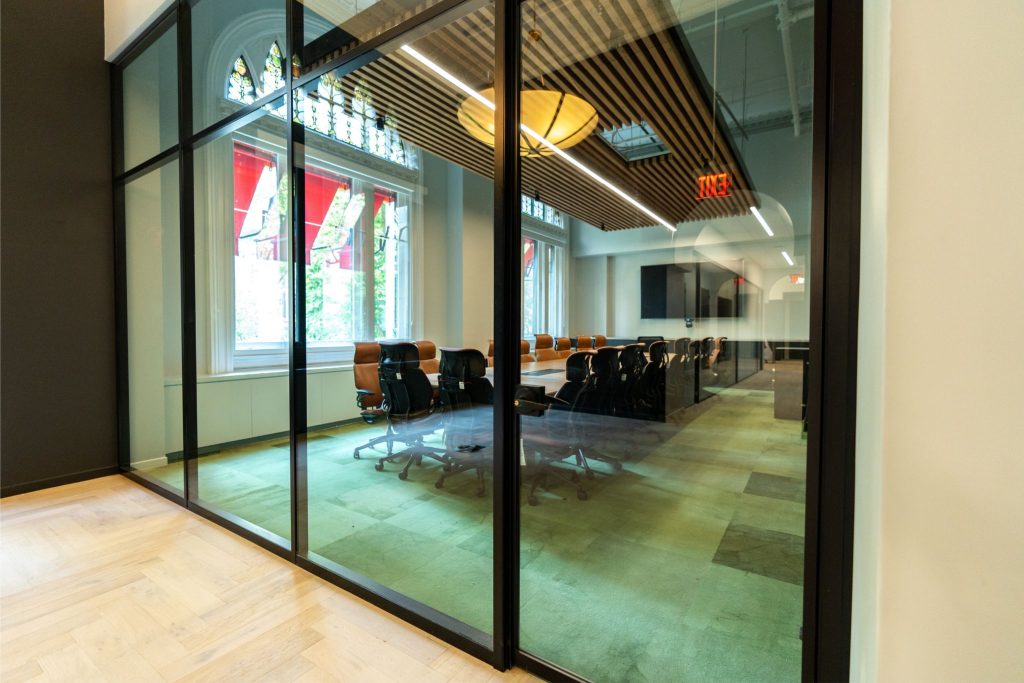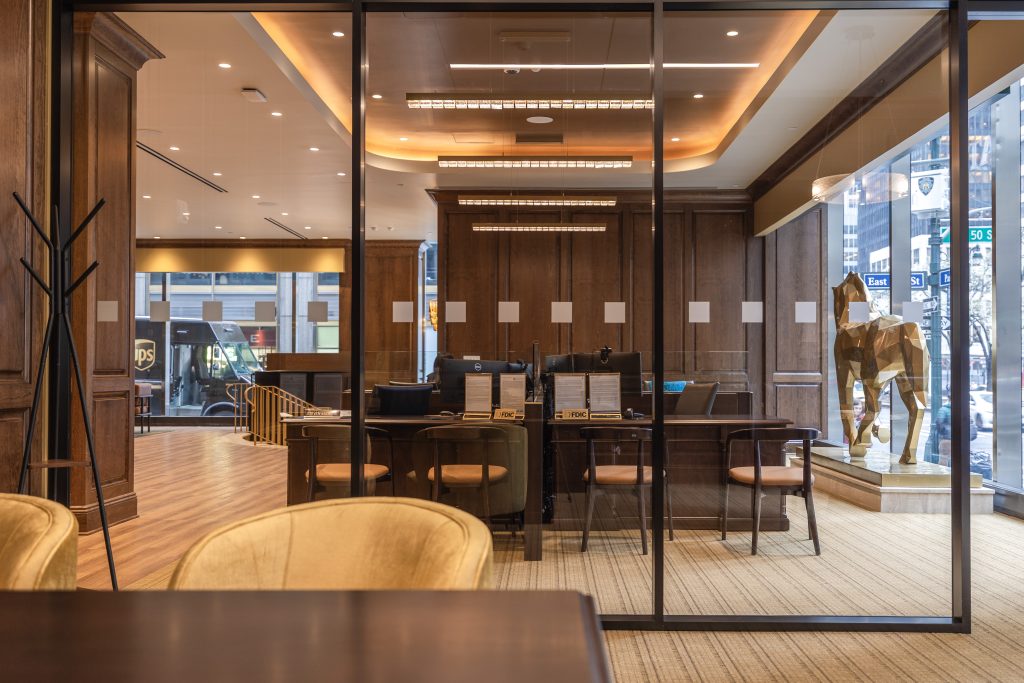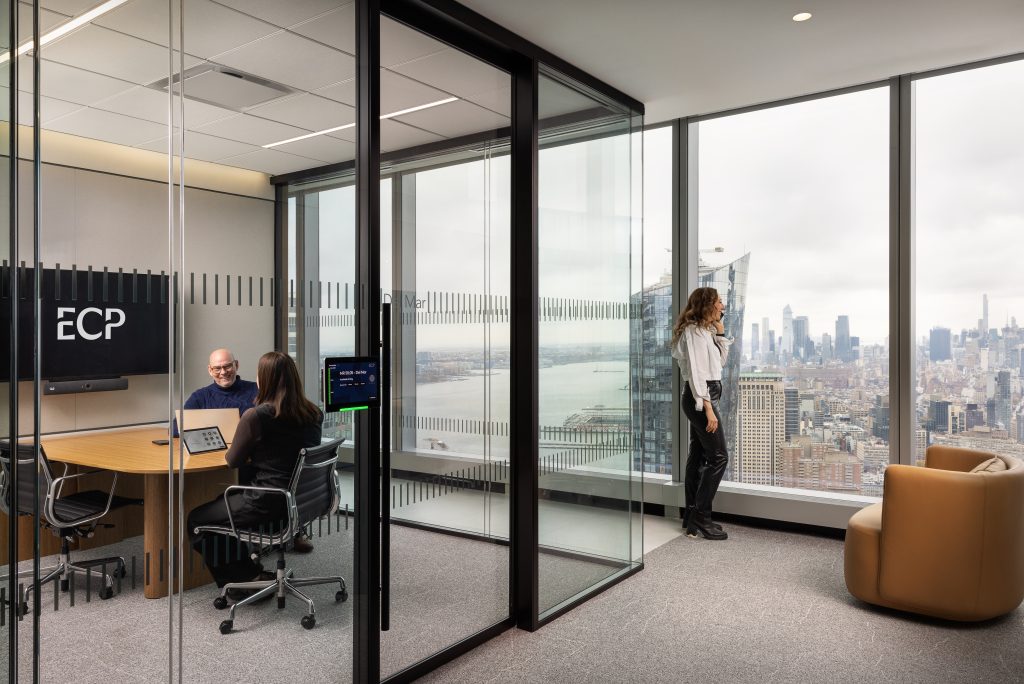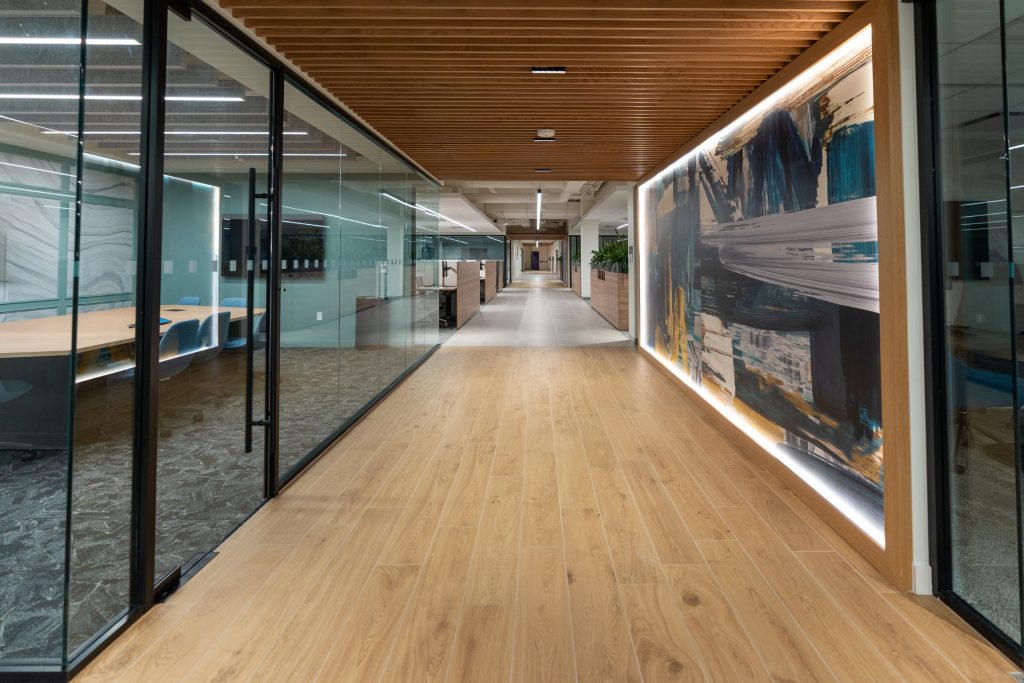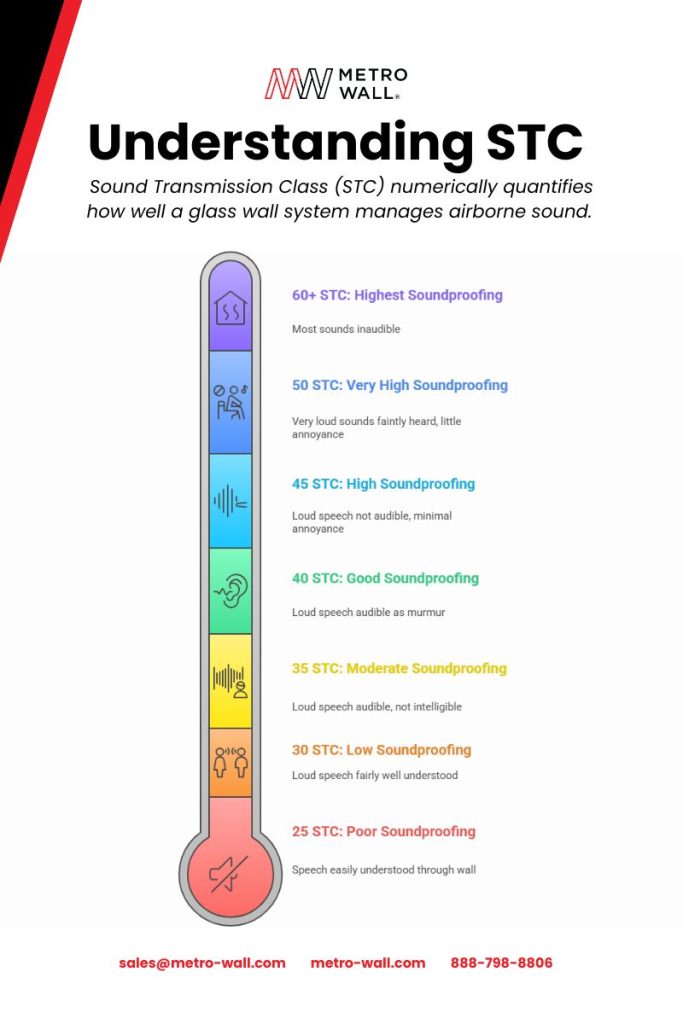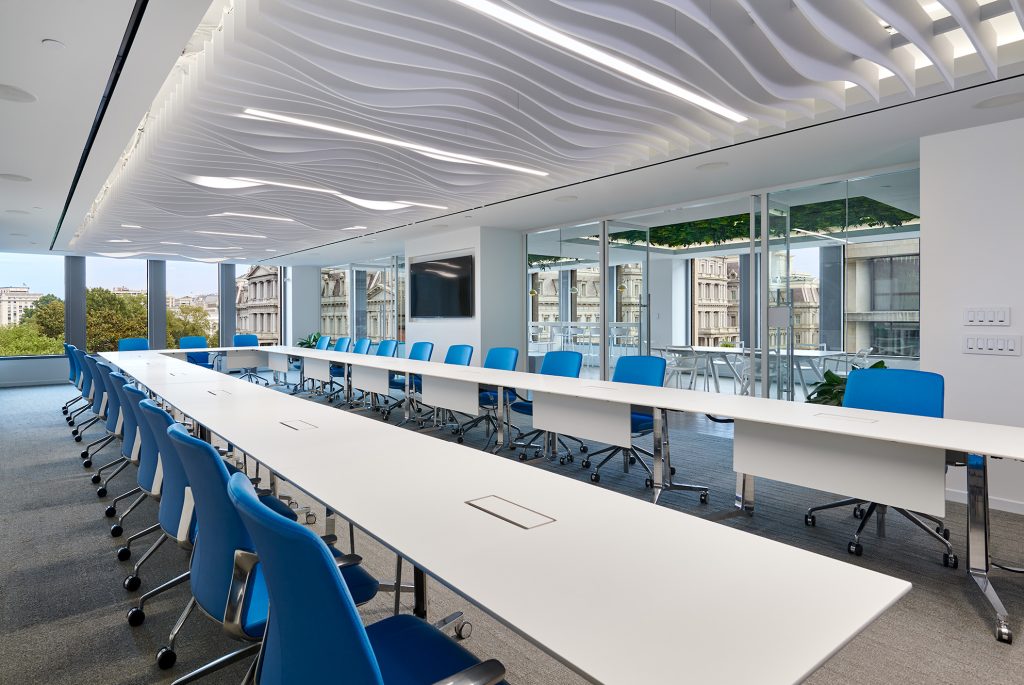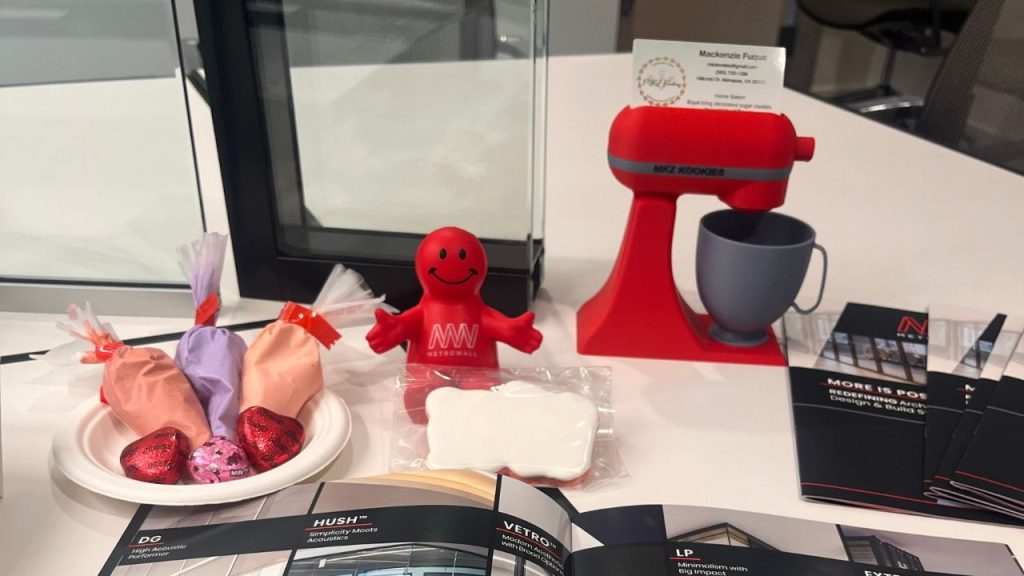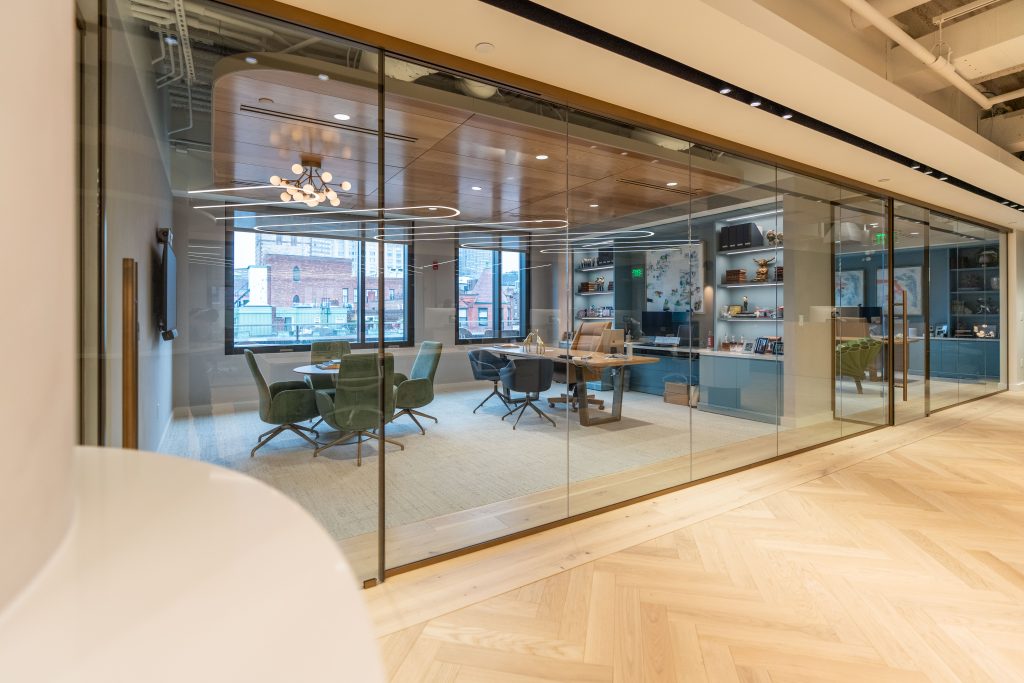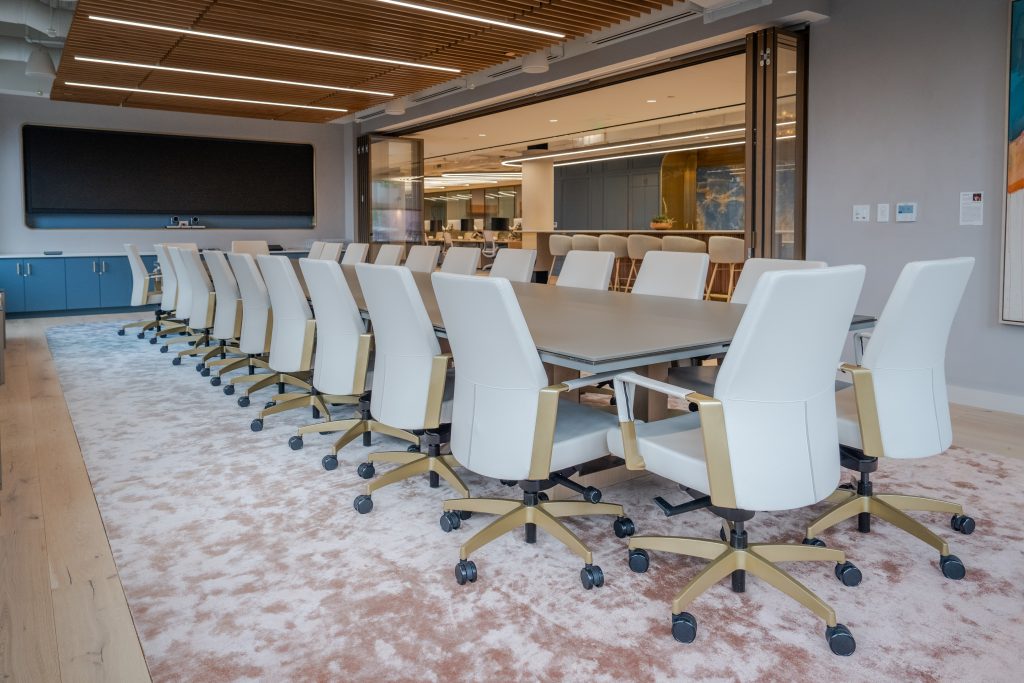Glass wall systems are helping architects and designers create bold spaces that are flooded with natural light and feel open and spacious. However, understanding the nuances between single- and double-glazed options becomes crucial, especially when acoustic performance plays a significant role in your space’s functionality and comfort. Let’s delve into the key differences and explore the unique benefits each offers.
Single-Glazed Glass Walls: Simplicity and Affordability
As the name suggests, single-glazed glass walls feature a single pane of glass within the framing system. This design is the simpler and generally more cost-effective option upfront. Single glazing excels in visually connecting spaces and maximizing natural light transmission. It’s a popular choice for interior applications where sound privacy isn’t a primary requirement. Our LP, VETRO, HUSH, and ENDURE Series all offer single glazing.
Benefits of Single-Glazed Glass Walls
- Cost-Effective: The initial investment for single-glazed systems is typically lower than double-glazed alternatives.
- Sleek Aesthetics: Single glazing often presents a minimalist and seamless visual.
- Ease of Installation: The simpler construction can lead to quicker and easier installation.
However, when it comes to acoustic performance, single-glazed glass offers limited sound insulation. Sound waves readily pass through a single layer of glass, meaning noise transfer between adjacent rooms can be significant. While suitable for areas where sound privacy isn’t critical, single glazing may not be the best choice for offices requiring focused work, conference rooms needing privacy, or residential spaces prioritizing quiet.
Double-Glazed Glass Walls: Enhanced Performance and Acoustic Comfort
Double-glazed glass walls incorporate two panes of glass separated by a sealed air or gas-filled cavity. This seemingly simple addition dramatically improves the system’s overall performance, particularly in terms of acoustic performance and energy efficiency. The air or gas trapped between the glass panes acts as an insulating barrier, effectively dampening sound vibrations and reducing noise transmission. Our ENDURE, HUSH, and DG Series are all double-glazed systems.
Benefits of Double-Glazed Glass Walls
- Superior Acoustic Performance: The air gap in double glazing significantly reduces sound transfer, creating quieter and more private spaces. This is a major advantage for environments where acoustics are paramount.
- Improved Energy Efficiency: The insulating air gap minimizes heat transfer, keeping interiors cooler in the summer and warmer in the winter, leading to reduced energy consumption and lower utility bills.
- Enhanced Comfort: By regulating temperature and reducing noise, double-glazed walls contribute to a more comfortable and productive indoor environment.
- Increased Property Value: The added benefits of energy efficiency and sound control can enhance a property’s overall value.
While the initial cost of double-glazed systems is higher, the long-term benefits in terms of energy savings, enhanced acoustic performance, and improved comfort often outweigh the initial investment. Additionally, when working with a glass wall partner like MetroWall, choosing a double-glazed system doesn’t mean you should expect a longer lead time. For standard finishes and hardware, we have 3-4 week lead times for all of our double-glazed systems.
The optimal choice between single- and double-glazed glass walls hinges on your client’s specific requirements and priorities. If budget is a primary concern for interior spaces where acoustic performance isn’t critical, single glazing can be a suitable option. However, if you prioritize sound privacy, energy efficiency, and a more comfortable environment, especially in areas like offices, meeting rooms, or residential spaces near busy streets, double-glazed glass walls offer a significant advantage in controlling acoustic performance.
By carefully considering the differences and benefits of each system, you can make an informed decision that aligns with your design vision and functional needs, ultimately creating a space that is both visually appealing and acoustically comfortable. If you’re interested in our glass wall systems, we recommend downloading our brochure and reaching out to our team.
